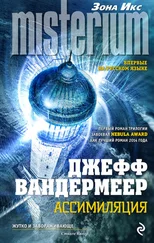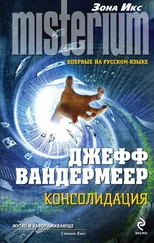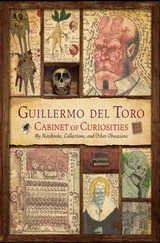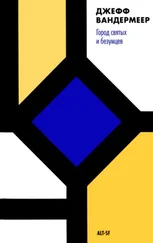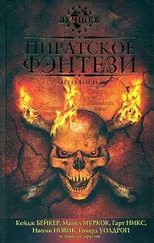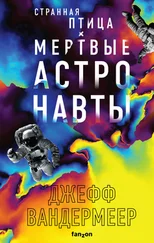Джефф Вандермеер - The Thackery T. Lambshead Cabinet of Curiosities
Здесь есть возможность читать онлайн «Джефф Вандермеер - The Thackery T. Lambshead Cabinet of Curiosities» весь текст электронной книги совершенно бесплатно (целиком полную версию без сокращений). В некоторых случаях можно слушать аудио, скачать через торрент в формате fb2 и присутствует краткое содержание. Жанр: Фэнтези, на английском языке. Описание произведения, (предисловие) а так же отзывы посетителей доступны на портале библиотеки ЛибКат.
- Название:The Thackery T. Lambshead Cabinet of Curiosities
- Автор:
- Жанр:
- Год:неизвестен
- ISBN:нет данных
- Рейтинг книги:5 / 5. Голосов: 1
-
Избранное:Добавить в избранное
- Отзывы:
-
Ваша оценка:
- 100
- 1
- 2
- 3
- 4
- 5
The Thackery T. Lambshead Cabinet of Curiosities: краткое содержание, описание и аннотация
Предлагаем к чтению аннотацию, описание, краткое содержание или предисловие (зависит от того, что написал сам автор книги «The Thackery T. Lambshead Cabinet of Curiosities»). Если вы не нашли необходимую информацию о книге — напишите в комментариях, мы постараемся отыскать её.
The Thackery T. Lambshead Cabinet of Curiosities — читать онлайн бесплатно полную книгу (весь текст) целиком
Ниже представлен текст книги, разбитый по страницам. Система сохранения места последней прочитанной страницы, позволяет с удобством читать онлайн бесплатно книгу «The Thackery T. Lambshead Cabinet of Curiosities», без необходимости каждый раз заново искать на чём Вы остановились. Поставьте закладку, и сможете в любой момент перейти на страницу, на которой закончили чтение.
Интервал:
Закладка:
If the monks’ own records can be believed—and these accounts are vague on many points—by the late 1200s, the monks had succeeded, perhaps in partnership with Arab scientists traveling to Africa, in fashioning a mechanical equivalent to what presumably must have been a kind of symbiotic relationship with a form of Turrilepus Gigantis.
Over time—due in part to the creation of copies and the reduction in the number of monks from fatalities from drowning, slipping on wet stone floors, and the like—each monk came to be in possession of a replica of his own, although from the few descriptions, most of these may have been crude, nonfunctional copies.
The Shank— our Shank, the monks said fondly—soon became sanctified as a holy object. It became friend, confidant, and spiritual guide to every monk on the island, from the lowliest of the novitiate to the interim abbott. The monks carried the replicas around in their pockets, held them delicately (desperately) to their mouths, whispering secrets in the dark. Given the extraordinarily long lives of the monks, they had more secrets than most to confess to their small, metal friends.
After the silence of the Dark Ages, the Shank came once again to the notice of the burgeoning medical community in the West in the form of a smattering of accounts that hailed it as a kind of miraculous relic, but noting that even though healed, the recipients of the Shank suffered from a strange melancholy bordering on mania, following their treatment. Such patients drew pictures of the Shank—both the clockwork Turrilepad and the Turrilepad in the flesh. They painted portraits and composed sonnets and sang odes. They whispered the name of the lost saint in their dreams, and, as though suddenly losing sight of their senses, they would call out to him during the day, responding to the ensuing silence with fits of weeping. They left their families, left their businesses and affairs, and took to the sea, their eyes scanning the horizon for . . . well, they would not say. It was generally believed that they could not say.
Indeed, by the year 1522, Pope Adrian VI—having had enough of talk of floating islands, healing that resulted in death by melancholia, bleeding, or worse, and other rumors that, in his opinion, were, at best, due to the infernal influence of the followers of that fallen priest, Martin Luther, or, at worst (and Heaven forbid!), an insidious Ottoman plot—banned the use of the Shank, banned mention of the Shank, and excommunicated the entire Order of St. Brendan. “Since the presence or absence of suffering is due wholly to the whims of God, it is a blasphemy and an insult to thwart the divine Plan,” he wrote in October of that year, though, in his writings, he demonstrates an acute ignorance of how the Shank worked. He died a year later. It is doubtful that the monks on the wandering isle ever knew of their excommunication, or, indeed, that they would have cared.
Throughout the historical record, then, the actual function of the Shank had gone assiduously unmentioned in its brief appearances. The witnesses to the Shank merely attested that it worked, remaining curiously mum on other important matters for quite some time.
Perhaps because of this very mystery, Dr. Lambshead became keenly interested in locating one. Through his deep and multilayered explorations of the history of the medical arts, Lambshead had encountered several modern references to the Shank—particularly in his extensive rereading of The Trimble-Manard Omnibus of Insidious Arctic Maladies, edited by John Trimble and Rebecca Manard, long after his bitter and public feud with both Trimble and Manard—a kind of attempt through scholarship to reconcile. Still, he did not lay eyes on the object until many years later.
According to Dr. Lambshead’s journals, volume 27, book 4, he finally encountered the Shank during World War II, while performing his duty as a surgeon on the Island of Mykines, the Faroe Islands still under the British flag. (He would soon return to his wartime efforts at London’s Combustipol General Hospital.)
On October 5, 1941, the doctor wrote: “Patient arrived: an elderly gentleman, rapid heartbeat, high fever, terrible bleeding from the mouth and anus. Private Lansing informed me that the ancient man was found clinging to a leather-hulled skiff that had wedged between two large rocks at the lee of the island. The man was dressed in the manner of those bent toward monasticism—rough cloth, broken sandals, a rope binding the waist—and was impossibly old. His face had the look of leaves gone to mulch. His body was as light as paper and twice as fragile; his limbs fluttered and flapped as the breeze blew in cold gusts over the North Atlantic.”
Lambshead further notes, and the duty log from the day confirms, that “He claimed to be an abbot in the Order of St. Brendan, and asked for forgiveness several times, but for what we had no clue, except for frequent references to his ‘weakness.’ Where he had come from, we had no idea—due to the currents in that place and a partial blockade by the Germans, it was all but impossible that he had sailed his boat from another part of the island—he had to have come from the sea.” However, as Dr. Lambshead noted, there wasn’t another island within one hundred miles, and the monk’s boat could at best be classified “as a pathetic cockleshell.”
The man carried with him “an intricate mechanical device that he clutched tightly in his hands.” Although the artifact intrigued Lambshead, he had no time to examine it closely. The man was in need of immediate medical assistance. The bleeding was so profuse that it seemed to the doctor to have been caused by shrapnel, though that was “terribly unlikely.” There had been no attacks in the last week against any of the islands—just a long, tense stalemate—and the wound “was fresh, and flowing.”
The old monk explained that he had come from a place called Brendan’s Isle after his craft became tempest-tossed in a sudden gale, and the island disappeared, and the monk was left alone on the undulating waves. Somehow, the doctor did not quite believe this explanation, although “to this day I couldn’t say why I should doubt a dying monk.” 2
“Come back,” the monk moaned, his eyes sliding past the rim of his sockets. “Oh, please come back with me.”
“Does it hurt here?” the doctor asked, ignoring the monk as he palpated the belly.
“Was this the fate of our beloved Brendan?” the old man wheezed. “To realize too late that he was wrong to leave, that he wanted to come home.” Tears leaked from the old man’s rheumy eyes. “Always we wander, and it is so lonely. No matter where our island travels.”
The doctor, assuming the man was raving, called the nurse to bring in the ether.
“Don’t operate,” the old monk raved, clutching his belly. “Oh, dear God, don’t take it away.”
“Don’t take what away?” Lambshead said reasonably. “Your odd artifact is safe with us. You can have it back once we’ve operated.” He wondered with growing irritation what on earth could be taking that nurse so long.
The monk’s thin arm shot from the gurney, grabbed the doctor’s crisp, white coat. “We were so alone,” the monk whispered. “The Isle of the Blessed is a cold and lonely and desperate place without our beloved saint. And I am alone, and not alone. My brother! My brother! Don’t take him!”
Lambshead reports that the monk shuddered so violently as the nurse came in, donning her surgical smock and mask, that he thought the monk might die right then, right there.
Five drops of ether, the doctor remembers thinking calmly. “Or, perhaps seven. Indeed, make it an even ten.”
Soon, Lambshead opened up the anesthetized man’s belly, and deep in the old monk’s gut he found a very large tumor—nearly the size of a rugby ball, though three times as heavy—and inside the tumor, happily burrowing and eating away, “was a specimen of some form of Turrilepus Gigantis! The mirror image of the complex clockwork artifact we had found in the monk’s pocket!”
Читать дальшеИнтервал:
Закладка:
Похожие книги на «The Thackery T. Lambshead Cabinet of Curiosities»
Представляем Вашему вниманию похожие книги на «The Thackery T. Lambshead Cabinet of Curiosities» списком для выбора. Мы отобрали схожую по названию и смыслу литературу в надежде предоставить читателям больше вариантов отыскать новые, интересные, ещё непрочитанные произведения.
Обсуждение, отзывы о книге «The Thackery T. Lambshead Cabinet of Curiosities» и просто собственные мнения читателей. Оставьте ваши комментарии, напишите, что Вы думаете о произведении, его смысле или главных героях. Укажите что конкретно понравилось, а что нет, и почему Вы так считаете.

